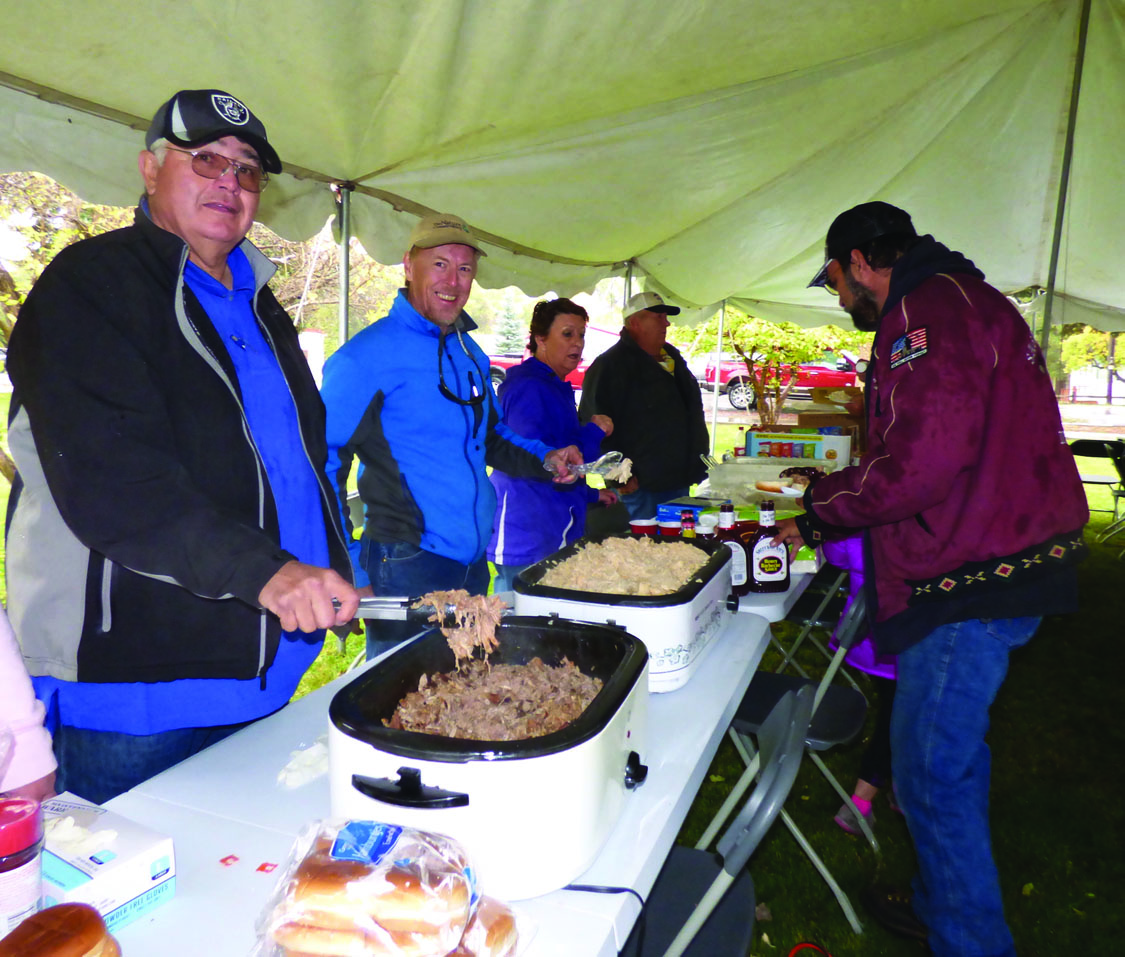Saguache County celebrates its 150th birthday

SAGUACHE — Despite a fall downpour Saturday, Saguache County residents braved the rain and the cold to celebrate the county’s 150th birthday under two tents set up for the event outside the Saguache County Courthouse.
Commissioners Tim Lovato, Jason Anderson, Ken Anderson and County Co-Administrators Wendi Maez and Lyn Zimmer-Lambert served residents a pulled pork and chicken barbecue dinner with all the trimmings. Birthday cake was served for dessert and residents could be heard singing the birthday song.
The county was created in 1866 by carving it from a piece of Costilla County just north of the Sangre de Cristo grant, and later, in 1873, encompassed a large area of land across the Continental Divide (The San Luis Valley, Virginia McConnell Simmons). One of its first officials was Russian immigrant Otto Mears, for whom the town park is named.
Below are some further highlights of Saguache County history.
History
A walk down 4th Street with its quaint historical storefronts gives residents and visitors to the county a taste of the town of Saguache in the late 1800s, early 1900s.
One of the first historic buildings that comes into view is the Saguache Courthouse. The original courthouse was built in 1881 but burned to the ground in 1910. Construction of the new courthouse was begun the same year. Most of the county records, kept in heavy steel vaults, were recovered intact following the fire.
The cornerstone for the new courthouse was set on July 16, 1910 in the public square several blocks from the location of the previous courthouse. The building was finished and ready for occupancy five months later. The new courthouse was designed by Denver architect John J. Huddart. J. Y. Parker of Sterling built the new two-story building at a cost of $36,110.
Right across the street from the courthouse sits the Saguache Hotel, potentially eligible for placement on the National Register of Historic Places. Built in 1910, renovation of the hotel began this year and will continue into the summer and fall.
The hotel was complemented by a 10-room addition on the north about 1920 and was significant then as the most important hostelry in the town. The hotel served as a stopping place for tourists and a gathering place for the local community.
Moving further down the street on the right hand side visitors will see the old Ute Theater, recently up for sale and just waiting for a new owner, The previous owners worked hard to restore the building and retain its distinct 1940s flavor. Built in 1916, Ute Theatre was originally a livery stable that later served as a garage and blacksmith shop.
The height of the building was increased by new owner Ross Labart in 1930, and it became the Ute Theatre. The theater seats are art deco style, popular in the late 1930s, early 40s. The popcorn machine is a 1930 Manley Aristocrat — then a top of the line model. Ordered during the war effort, it took two years to arrive. Very few of these machines remain in existence.
The Saguache Crescent, a yellow frame building, housed the first linotype press to set up shop in Saguache in 1917, when local doughboys were still fighting World War I and the downtown area was alive with restaurants, shops and businesses.
The 1874 building has always housed the paper and those exploring 4th Street won’t want to miss what’s inside. For amidst the collective paper and mechanical clutter of nearly 100 years, sits the last hot lead press in America. Stop on early in the week to see the owner, Dean Coombs, hand set the type for Wednesday’s edition.
Two banks and other restored buildings fill out the block, some of them now serving as art galleries and antique stores.
Other buildings of note in the area include the Saguache County Museum along Highway 285, chock full of the county’s colorful history. Visitors come from all over the country to visit this historic treasure trove each year.
Just across the street is the Hazard House, a gift to the Saguache County Museum from Georgie Marie Hazard Givan in 1994. Graced with many fine pieces of furniture and other décor, the home depicts the comfortable lifestyle of the wealthier Saguache families of the 1920’s and 1930’s.



